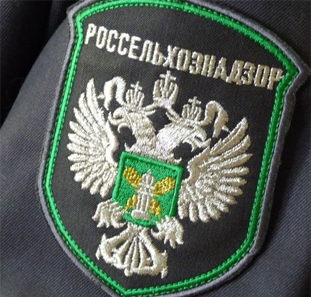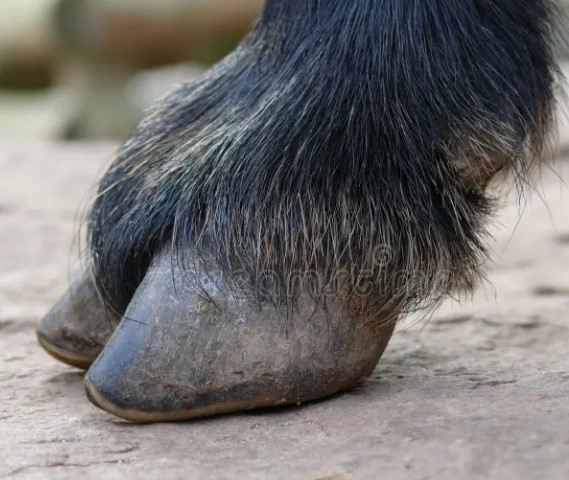Meat may rise in price by the beginning of the kebab season

By the May holidays, the Russian poultry industry will come without carry-over stocks of products
MEAT prices may increase by May, this forecast was announced by Albert Davleev, President of Agrifood Strategies. This is primarily due to problems with the supply of hatching eggs due to the spread of avian influenza. Particularly painful was the ban on deliveries of parent and grandparent stocks to RUSSIA. “This has led to a significant reduction in poultry plantings, in particular in January. The process began to stabilize only by the beginning of March,” Davleev said. “The new commercial stock will grow only one and a half to two months after incubation, which means that until the beginning of May we will experience a significant shortage of one-day-old chickens and young broilers, which will be fattening the first or second part of the production cycle.”
Thus, by Easter (this year falls on May 2) and by the beginning of the May holidays, the Russian poultry industry will come without carry-over stocks, which in our country in recent years during this period traditionally ranged from 150 thousand tons to 250 thousand tons, and with reduced livestock in many Russian poultry farms, Davleev estimates. “By the way, before the New Year, as a rule, ending stocks amounted to 200-300 thousand tons, but by the end of 2020 there were no such stocks,” he adds.
According to Rosstat, by the end of February, the balance of poultry meat in agricultural organizations was 46.1 thousand tons, which is 21.1% less than a year earlier. In general, meat residues decreased by 19.8% to 51.3 thousand tons. Poultry production for slaughter in agricultural organizations in January-February decreased by 6.2% compared to the same period in 2020. The number of poultry in agricultural organizations by the end of February decreased by 2.1%.
Davleev recalls that before the start of Lent, it was obvious that demand for poultry meat exceeded supply, which caused a significant increase in prices both in wholesale and retail. With the beginning of Lent, demand decreased, and prices for poultry products somewhat stabilized.
However, in May, especially given the expected lifting of bans on mass events in a number of regions, Davleev expects an explosive start to the barbecue season, and this will require "a huge amount of meat." “And since the increase in pork production in recent months is very modest, and the supply of poultry is limited, it is possible that the crisis associated with the supply of hatching eggs at home and from abroad will lead to an increase in meat prices in May,” he predicts.
The National Meat Association (NMA) does not yet see any grounds for a significant increase in prices by early May. “The current price for poultry products encourages market participants to return to their previous production volumes as soon as possible, which were noticeably reduced due to bird flu,” comments Sergey Yushin, HEAD of the NMA. “This will help to partially restore the market in terms of supply.” He adds that there are indeed almost no carry-over stocks of poultry, but the Ministry of Agriculture, ROSSELKHOZNADZOR and industry enterprises are taking measures to increase production. Further, much will depend on the situation with avian influenza and the volume of production and import of hatching eggs. “Already now we see that the Rosselkhoznadzor has additionally opened several dozen enterprises supplying hatching eggs,
According to the NMA, poultry prices have now stabilized. For wholesale pork, they began to decline rapidly. The reason is Great Lent, as well as the restoration of the growth rate of production in pig breeding. Pork prices will also put pressure on the poultry meat market, Yushin said. “In general, we assume that prices for both poultry and pork may rise seasonally by the May holidays, but not significantly,” he predicts.
Yushin emphasizes that the meat market remains volatile, and prices for different parts of carcasses change markedly depending on the season. For example, by the barbecue season, the cost of pork neck increases significantly, and for other parts of the carcass, such as the shoulder blade, they, as a rule, do not show such upward dynamics during this period.
Sergey Yushin, head of the National Meat Association:
It's also worth noting that shelf prices don't always reflect wholesale price changes. Thus, prices for live pigs in January last year were 45% lower than in August. And then they dropped sharply from mid-autumn. However, in retail we have not seen such jumps and falls. All seasonal price fluctuations are smoothed out by the pricing policy in trade enterprises.
In general, the average annual wholesale prices for pork this year, judging by the situation, will not be much higher than in the past, NMA believes. “We do not even rule out that they will not rise at all compared to the average prices of 2020. As for poultry meat, its average annual price in 2021, after five years of stagnation, will be noticeably higher than in 2020,” Yushin compares. He adds that the change reflects the massive increase in production costs and the effects of widespread avian influenza.
“Now wholesale prices for poultry meat have reached a new level — one that, on the one hand, ensures profitability for producers, on the other hand, still leaves poultry as the most affordable type of meat,” says Yushin. He said that the fact that consumers tried to save money by switching to more affordable types of protein, as disposable incomes continued to fall, was another impetus for prices. Plus, social payments during 2020 supported demand, which seriously increased in early 2021, and as a result, the cheapest type of meat became the leader in price appreciation. According to Rosstat, by March 29, compared with the end of December 2020, the average retail prices for chicken increased by 12.7%, pork rose by 2.5%, beef - by 2.9%.
Explosive demand for pork during the barbecue season this year is not expected by the NMA. The fact is that many people, especially in large cities, left the city last year in May and stayed at their dachas during the period of self-isolation, where they could cook barbecue in the same way, Yushin explains. “Perhaps this year the demand for meat will increase slightly compared to the past due to the lifting of quarantine restrictions and the possibility of gathering by companies, provided that the weather is good, but we do not expect a significant increase,” he concludes.
Meanwhile, the National Union of Pig Breeders (NSS) has lowered its forecast for an increase in pork production in 2021 from 250-260 thousand tons to 175-180 thousand tons, Kommersant reported, citing the presentation of the union. The reason is several outbreaks of African swine fever at the end of last year. Against this background, the NSS also adjusted the price forecast. If earlier, due to a glut of the market, the union expected a decrease in average annual wholesale prices by 4-5%, now it predicts that the cost will remain at the level of 2020 - about 100 rubles per kg per "live".
Read together with it:
- "Белорусские продукты - страновой бренд". В Гродно поздравили работников сельского хозяйства областиФото 13 ноября, Гродно. В Гродно торжественно поздравили с профессиональным праздником работников сельского хозяйства, передает корреспондент БЕЛТА.Этот праздник в нынешнем году для аграрной отрасли региона особенный - впервые в истории в области собрали более 2 млн т зерна с учетом кукурузы. Как отметил в беседе с журналистами председатель комитета по сельскому хозяйству и продовольствию облиспол...
- Министр сельского хозяйства предлагает долгосрочные контракты для стабилизации цен на продуктыЛут подчеркнула, что за последние десять лет рост цен на основные продукты в России не превысил общий уровень инфляции, а в некоторых категориях даже отстает от нее. Тем не менее, наблюдается устойчивый рост себестоимости продукции из-за увеличения цен на технику, энергоресурсы и логистику. Для контроля ценовой ситуации министерство сотрудничает с депутатами и рядом других ведомств. Также она упом...
- В Тульской области уничтожили 24 кг санкционных сыров и мясных продуктов из ЕвропыВо время совместной проверки с транспортной прокуратурой из оборота было изъято 24,45 кг сыров и мясных изделий, произведенных в таких странах, как Дания, Испания, Норвегия, Италия, Ирландия и Франция. Ввоз данной продукции на территорию России запрещен в соответствии с указом Президента, касающимся специальных экономических мер. Изъятая продукция была ликвидирована путем измельчения и денатурации...
- Rosselkhoznadzor has banned meat imports from two Belarusian enterprises due to violations.In addition, three other Belarusian producers are now subject to strict laboratory monitoring due to initial deviations: azithromycin was found in poultry MEAT from Druzhba Poultry Farm, and the pesticide imidacloprid was found in honey from Pchalyar Polachchyny Farm. Powdered MILK from Luninetsky Dairy Plant was also found to containcoli bacteria . These measures were taken at the request of the ...
- Зеленский ввел санкции против своего бизнес-партнераМиндич и Александр Цукерман, который, как считается, отвечает за его финансовые вопросы, значатся как граждане Израиля. Санкции против них ввели на три года, они включают блокировку активов. На Украине сочли ограничения мягкими Владимир Зеленский Президент Украины Владимир Зеленский подписал указ о введении санкций в отношении совладельца студии «Квартал 95» Тимура Миндича и его знакомого бизнесме...
- Princess Eugenie's art gallery has been accused of violating sanctions against Russia.According to British authorities, Hauser & Wirth supplied "luxury goods to individuals associated with Russia" between April and December 2022. The Times reports that the person in question is Princess Eugenie of York, a Moscow-based collector.HM Revenue & Customs has accused the contemporary art gallery Hauser & Wirth, whose London branch is directed by Princess Eugenie of York, the daughter of P...
- В Амурскую область поступило свыше 6 тысяч тонн мяса птицы из КитаяС 3 июня по 6 ноября инспекторы проверили 290 партий мяса, все из которых были сопровождены ветеринарными сертификатами, подтверждающими их качество и безопасность. Лабораторные исследования, проведенные под контролем Россельхознадзора, не выявили нарушений, и груз был допущен на территорию России.



























































